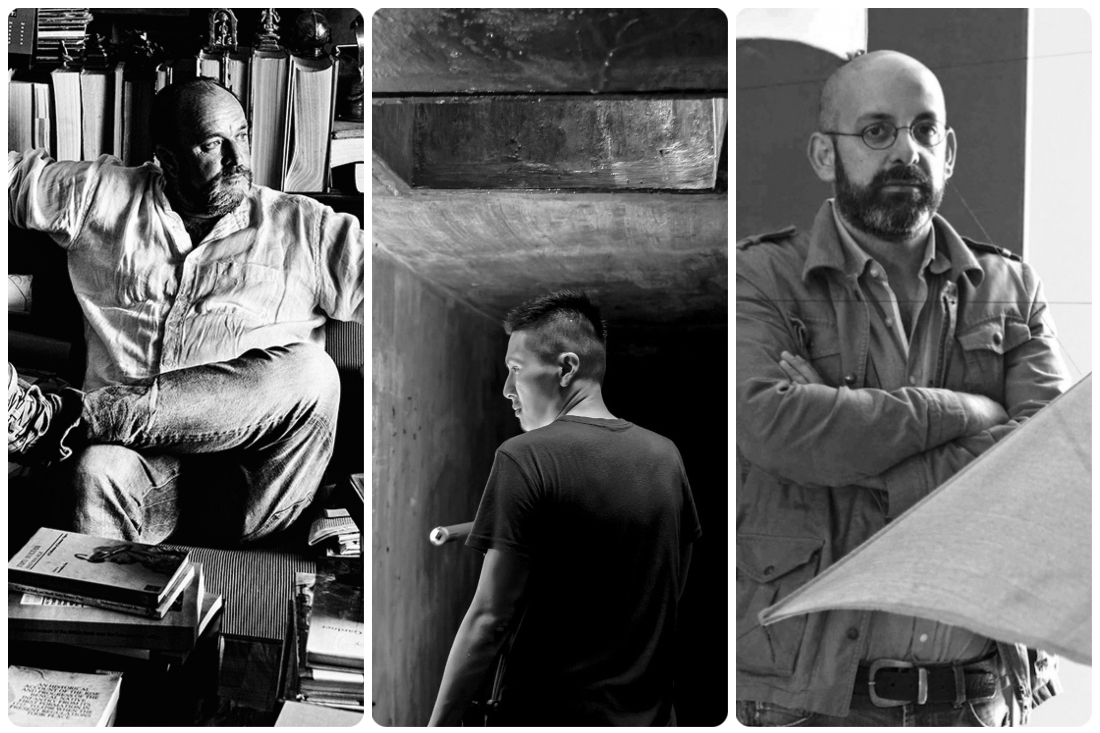
L: William Dalrymple; C: Samson Young; R: Martand Khosla

L: William Dalrymple; C: Samson Young; R: Martand Khosla
As the world is evolving, lines are blurring between artistic disciplines. We often find creativity extending its imaginative thought to diverse mediums, making it a cohesive whole. Be it architecture, design, music, literature...it all flows alongside one another but ends up in a large sea called Art. In this section we feature three very diverse individuals hailing from different disciplines— those who have extended their expertise and branched out to explore Art. Excerpts from their interviews as follows:
William Dalrymple: Writer & Photographer
How different is the photographer from the writer?
They are quite similar in a way. We both are great fiddlers. There are some writers and photographers that try to capture that instance and it’s all about speed and the moment. Both my writing and photography are similar. With a photograph I try various effects till I get it right, and I love that about technology today—you can play with the image till you are absolutely happy.
Do you feel lines are blurring between creative disciplines?
I think creative people are often creative in more than one way and that has probably always been the case. If you look at the great painters in history like Michelangelo, he was a painter, sculptor, architect and a poet, so were Leonardo, Bellini. People often find themselves expressing in more than one medium especially if they have an urge to create, an urge to record the world and to express themselves.
Samson Young: Music Composer & Artist
What inspires your Art?
I am indebted to many artists before me who are musicians by training but branched out into contemporary art, for example Nam June Paik, Yoko Ono, and John Cage.
What connect do you see between art and music?
I don’t really make a distinction—but musical training gives me a very specific set of tools with which to process the world.
Do you feel lines are blurring between creative disciplines?
I think the boundaries between disciplines have been blurring for many decades, what is more interesting to me is how institutions and the public-at-large still cling to these boundaries. They are probably never going away. The situation is similar when we look at cultural identities—the yearning for an authentic self is persistent.
Martand Khosla: Architect & Artist
What comes first for you—Art or Architecture?
In their conceptualisation, I believe that the art and architecture challenge me with the same larger questions and that discourse remains easily interchangeable for me. In its practice and speed however, they are fundamentally different. If architecture is to be seen as building, it remains a slower, broader collective endeavour. However, if architecture is seen in its truer broader sense as a generator of ideas through drawings, sculpture, writings and models, its practice becomes more assimilated to that of art and in some sense a more solitary pursuit. Over the years, I have pursued both the collective and the solitary within architecture. A substantial part of my sculptural practice is very much informed by architectural thinking and vice versa.
Do you feel lines are blurring between creative disciplines?
Historically, I think that lines have always been blurred not only between creative disciplines but also between science, philosophy and the arts. This paradigm of segregation of professional disciplines is more of a 20th century phenomenon that we are still continuing with, but it doesn’t make sense to me. And as such it is only natural that for me, lines are blurred between creative and other disciplines. Architecture for the last several decades has been debating scientific and philosophical frameworks to apply to architectural theory. So, one must not perhaps look at this as a blurring of different creative disciplines but perhaps more as modes of expression.